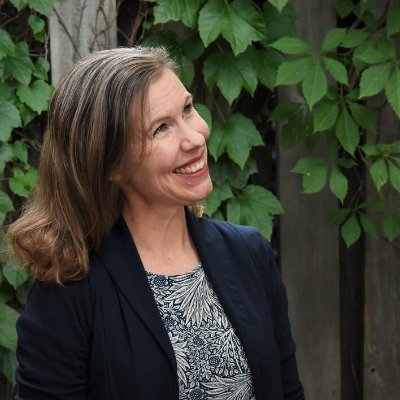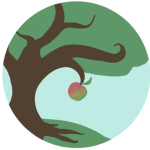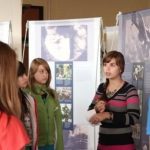
Risa Gluskin is a history teacher with the Toronto District School Board who recently interviewed Professor Mairi Cowan about her work. In honour of Women’s History Month, we are sharing the interview here.
Doing History is about bringing history teaching to life through interviews with people who use history in their jobs. The intent is to help high school history teachers show their students the relevance of history as an occupation, not just a course.
Photo courtesy of Mairi Cowan
Mairi Cowan is Associate Professor of History at University of Toronto Mississauga. As you will see in the interview below, Mairi is a “premodernist” with a focus on medieval and early modern periods. Among her books is The Possession of Barbe Hallay: Diabolical Arts and Daily Life in Early Canada (2022), an excellent examination of witchcraft and women in New France in the 17th century. Mairi has won numerous teaching awards – please see this full biography from UTM. Mairi has wide ranging interests, a great sense of humour, and familiar with what goes on in high schools as she is married to a science teacher.
1. What courses do you teach? Why do you think they are popular?
I teach a first-year course in world history, second-year courses in medieval and early modern European history, and upper-year courses on more specialized topics such as the life cycle in medieval and early modern Europe, missionaries as colonizers in New France, and microhistory. I also join with an ecologist to co-teach a seminar on the history and ecology of early modern contact with a focus on the Columbian exchange (the movement of plants, animals, and microbes across the Atlantic, and later around the world, in the wake of Christopher Columbus’ voyages). All the courses that I teach are connected in some way with my research.
These courses do end up being quite popular, at least in the sense that they attract a lot of students. I think the popularity comes in large part from the subject matter. Students have long been drawn to learning about the medieval period, and I’ve noticed a more recent interest in the history of colonization. According to course evaluations, students also take these courses because of the instructor’s enthusiasm – which is very sincere on the instructor’s part! I am endlessly fascinated by the human past, and committed to helping students learn about it in a responsible way.
In addition to teaching regular courses, I also supervise students as research assistants or in independent reading courses. These students have transcribed archival materials from Quebec, Scotland, England, and Spain; surveyed their peers on how instructors can help reduce the stigma of failure; and prepared foods and drinks using recipes from centuries ago.
2. What is your approach to teaching world history? (Obviously it’s impossible to teach all of it – how do you incorporate themes?)
You definitely cannot teach all of world history in a single course. One thing I do is limit the chronological scope to history farther back than what students are most familiar with: we start with the question of when history begins, and we go up to the Haitian Revolution. We don’t ignore more recent history entirely – we consider how the past has been interpreted in the twentieth and twenty-first centuries as a way of approaching historiography, and we talk about how events and people from our course are commemorated today – but we concentrate on the world before the nineteenth century because I’m a premodernist by training, and I leave the modern world mostly to my colleagues.
Themes are helpful too, yes: they bring focus and coherence to a vast amount of material. In the first-year course that I teach, the theme is “inventions and discoveries.” We analyse examples of each from different places at different times, pondering questions of continuity and change, of cause and consequence, and of what “progress” means.
But even with a narrowed scope and a specific theme, any course on world history will need to leave out a lot of the past. So we talk about that too. I acknowledge openly that we give more attention to some places and times than others, that we leave vast amounts of history aside. This acknowledgement becomes the starting point for an important discussion of historical significance, with questions about who decides what history gets taught, how they make those decisions, and what criteria should be used in deciding.
3. How does your department approach teaching courses for first year students?
We have courses on different topics, but they are all connected through a program of coordinated skills development in tutorials. Whichever first-year course a student takes, therefore, that student will be practising the same suite of skills – coming up with a good research question, finding and selecting sources, assessing a historical argument, combining primary source evidence with secondary sources to make their own argument, communicating their ideas clearly and persuasively, revising their work in light of expert feedback.
In deciding which skills to emphasize, we look at what is expected by professors in upper-year courses, and we also listen to the students themselves to find out what they identify as most important to learn if they are going to be successful at university.
4. Are today’s students different than you’ve had before? (Every generation thinks so, but what does your experience say, with technology, attention, juggling of part-time jobs and school, etc.)
I agree that people in every generation think that their students, or young people generally, are fundamentally different in some way from what they themselves were like when young. And usually the assumption seems to be that things are getting worse. I remember people complaining about “kids today” when I was growing up, and my parents – who graduated from high school in the 60s – certainly remember their elders complaining about them. Their parents probably heard something similar too. In the 1920s, the Hull Daily Mail exclaimed, “we defy anyone who goes about with his eyes open to deny that there is, as never before, an attitude on the part of young folk which is best described as grossly thoughtless, rude, and utterly selfish.” This pattern of people thinking ill of the next generation goes back much farther too. One of the texts that students in my life cycle course read is by Alvarus Pelagius, a lawyer and teacher who lived in the fourteenth century. He makes all sorts of complaints about students in his day, including that they attend classes but make no effort to learn, that they frequently learn not what is on the curriculum but what they would be better not knowing, and that they spend their expense money from parents in taverns and at games. The students reading this text find a lot of resonance with what they hear about themselves seven centuries later! Among other medieval teachers complaining about students was Egbert of Liège, who wrote in the eleventh century that “scholarly effort is in decline everywhere as never before.” So, knowing this long tradition of older people complaining about the habits of younger people, I’m a bit skeptical of broad or simplistic claims about generational shifts. Every student is different from every other student, regardless of their generation.
But, having said all that, I do think that today’s cohort of students is experiencing a world that is different in significant ways from what I experienced when I was their age. They tend to have a heightened awareness of systemic and structural inequalities, which influences their views on what should be taught. Many are worried about climate change, some so much so that they are suffering from climate anxiety, which affects their plans for the future. They all have easier access to information than people had previously, which means that their main challenges in research are no longer locating and obtaining sources, but rather discerning which sources to trust and how to use what they find. After working with students as research assistants on a project about student perceptions of failure, and after seeing data from the National Survey of Student Engagement about the students at my institution, I also think that this group of students today, on the whole, is busier with part-time jobs and family responsibilities than were students, on the whole, even just a few decades ago.
5. Do you have any comments on the use of historical thinking concepts in the history curriculum in high school? Have you noticed any change in the preparation level of your first year students, such as ability to think more critically or analytically?
The historical thinking concepts are a very good approach for helping students to think historically, and I think they are probably very effective in the high school curriculum so long as the teacher has sufficient historical training.
First-year students vary widely in their levels of preparation, which is not surprising since there are no history prerequisites for our first-year history courses: some students arrive after having taken four or more history courses in high school, while others have not taken any history since Grade 10.
In general, I am pretty sure I can detect the imprint of what they learned in high school about the historical thinking concepts. They are generally very good, for example, at making a basic distinction between primary and secondary sources, and knowing that it is important to use primary source evidence in history. They are also very good at detecting bias in their sources, but sometimes need help for what to do next: they can be inclined to dismiss a source as soon as they think they see bias, but – depending on what they mean by “bias” – this procedure could leave them with no sources at all.
6. Off hand if you know, what kind of professions and programs do your history students pursue after undergraduate studies?
We have not tracked this systematically, but I know anecdotally that our students have gone on to do a lot of different things once they finish their undergraduate degrees. Quite a few become teachers – which makes me very happy. They also go to work as writers, policy analysts with the government, and helpers with the family business. Some continue their formal education further, studying for graduate degrees in history, law, English, politics, education, international relations, and social work.
I am really glad that graduates are finding ways to put their history degrees to good use out in the world. At the same time, I disagree with the idea that a university education is primarily job training. It can be, and should be, so much more. (I have written about my misgivings and my way through them in the short essay “Transferrable skills are a byproduct, not the point, of a university education.”)
7. How are UTM’s history programs, like high school courses, moving beyond essays to other types of assessments?
The essay remains a very standard assignment in our history courses, and for good reason: an essay can be an excellent venue for proposing and explaining an interpretation of the past. Many courses offer alternatives to the essay though, so that students are now also demonstrating their historical understanding through the creation of podcasts, videos, infographics, online exhibits, games, time-travel guides, even meals.
8. We have heard that enrollment in history programs and courses is down. Do you do outreach to schools to try to address that trend? What does it look like, or what would you want it to look like?
Some of us have worked with individual teachers to bring high school classes to our campus so that the students can attend our lectures, or so that we can run a seminar for them. I would like to see that initiative grow into something larger, perhaps beyond the individual teachers or schools to the board level.
I would also like to know more about why students do or do not choose to study history in high school and beyond: if you are a teacher or administrator with ideas, please let me know!
9. What would you like high school history teachers to know about studying history at the post-secondary level so that they could pass it on to their students?
Many history courses are offered at university: different time periods, different regions of the world, different methodologies, large lectures and small seminars, broad surveys and focused examinations, classroom learning and internships at historical sites. I hope that students will feel encouraged to try whatever they are most curious about, because history is a diverse field that benefits from a diversity of perspectives.
A lot of students tell me that they take history at university because of a particular high school teacher. So thank you to the excellent history teachers!
Risa Gluskin is a history and student success teacher at York Mills CI, on leave for 2023-24. Her personal project for the year, “For Teachers of World History” can be found on her blog.


